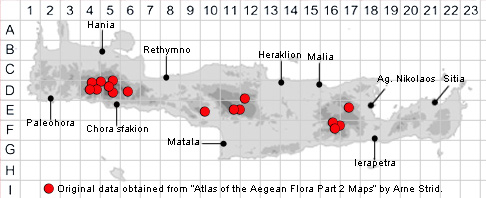
SPECIES DESCRIPTION
CROCUS SIEBERI
Family and Genus:- See- IRIDACEAE
Common Names:- None
Homotypic Synonyms:- None
Meaning:- Crocus (Gr) Thread, (reference to the stigmas of Crocus sativus).
Sieberi (L) For the botanist Franz Wilhelm Sieber (1785-1844).
General description:- Bulbous plant.
Corm:-
1) Corm ovoid to subglobose, 8-15 mm in diam., tunics fibrous, the fibres finely
reticulated, scarcely extending into a neck.
Leaves:-
1) 4-7, well developed at anthesis, usually equalling the flowers, 2-4 mm wide,
bright green with a fairly broad and distinct white median stripe.
Flowers:-
1) 1-3, tube, whitish or suffused brownish-purple; inside of the perianth segments
white with a yellow base and glabrous throat, exterior of the outer segments
variously striped or suffused purple.
2) Bract and bracteole, subequal, well-exserted from the cataphylls, membranous,
white often stained greenish.
3) Perianth-tube, 3-10 cm, white to purple, yellowish at the apex; segments 1·5-4·5
x 0·7-1·8 cm, oblanceolate or obovate.
4) Anthers, yellow.
5) Style, yellow to orange-red, shorter than to exceeding the stamens, obscurely
divided into 3 branches, each much-expanded and fimbriate or lobed.
Fruit:-
1) Capsule, cylindrical or ellipsoid, maturing at or above ground level by elongation
of pedicel.
2) Seeds, numerous, usually globose or ellipsoid, brownish or reddish, with a
strophiole.
Key features:-
1) Corm, outer tunics reticulated, forming a delicate mesh.
2) Leaves, 4-7, 2-4 mm wide.
3) Perianth, segments broadly elliptical white inside, exterior of outer segments
striped or suffused purple.
Habitat:- Calcareous open woodland, among Berberis bushes, stony ground
beneath cliffs, open slopes, flat clayey areas. (1100-)1500-2100
Distribution:- Cretan endemic of Lefka Ori, Psiloritis and the Dikti massifs and
Kedros.
Flowering time:- Mar-May.
Photos by:- Steve Lenton
